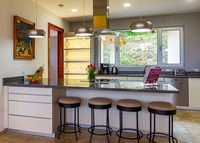Chester & Cheshire
- Home
- Add Listing
- Going Out
- -- Night Clubs
- -- Pubs & Bars
- -- Restaurants and Cafes
- -- Theatres and Cinema
- Pets
- Places to Stay
- Professional Services
- Services
- -- Business To Business
- -- Childrens
- -- Finance
- -- Hairdressers and Beauty Salons
- -- Health & Safety
- -- Property
- -- Tradesmen
- Shopping
- -- DIY
- -- Electrical Equipment
- -- Entertainment
- -- Fashions
- -- Galleries
- -- Home Improvements
- -- Motoring
- Things To Do
- -- Attractions
- -- Outdoor Activities
- -- Sports
- Retail Therapy
- Chester Tourist Guide
- -- Chester Zoo
- -- Chester Cathedral
- Links
- Blog
Quick Search
 Double glazing North Wales is very popular as a home improvement, however there are different types of glass - no one particular type of glazing is suitable for every single application. That is why there are so many different types of glazing available on the market. Toughened Glass Toughened glass is much stronger and has a higher compressive stress than annealed glass of the same thickness. This quality means that it is more resistant to impact breakages. If this glass is broken, it shatters into small fragments, which in turn prevents major injuries from occurring. Toughened glass is normally used in areas which are considered to have high risk of human impact such as bathrooms, glazed doors and windows which are over 1.5m in height. Laminated Glass Take the glass used in windshields for example, laminated glass might crack on impact, but the fragments will tend to adhere to the protective layer, rather than fall and potentially cause catastrophic injury. Laminated glass is used in situations where the protection of people and property is paramount. The two-ply construction of laminated glass offers resistance to penetration when it is subjected to forced entry. Tinted Glass Tinted glass reduces heat gain and glare within the home. Spectrally selective glazings absorb and reflect the infrared portion of sunlight while still transmitting visible daylight, meaning that your view of the outside remains unaffected. The main uses of tinted glass are to reduce the glare coming in from the outside, to reduce UV fading which naturally occurs to furnishings and to decrease the amount of solar heat gain through windows. Reflective Glass This has either a vacuum-deposited thin-film material coating or a pyrolytic coating. The vacuum-deposited coatings are soft and used for protection and longevity, they must be deployed inside an insulating glass cavity. Pyrolytic coatings are baked onto the surface whilst the glass is still hot - they are hard and durable and are normally glazed with the reflective surface to the exterior. Insulating Glazing Units IGUs are commonly referred to as double or triple glazing. The performance of IGUs depends upon the properties of each layer of glass and the sealing, thickness and content of the cavities between the glass layers. The cavities need to be sealed in order to prevent convective heat transfer - they may also be filled with an inert, low-conductivity gas such as argon. |
Archives
March 2023
July 2022
May 2022
April 2022
October 2021
August 2021
April 2021
March 2021
November 2020
October 2020
September 2020
August 2020
July 2020
June 2020
May 2020
April 2020
March 2020
February 2020
January 2020
September 2019
July 2019
June 2019
April 2018
January 2018
December 2017
November 2017
July 2017
April 2017
April 2016
March 2016
January 2016
December 2015
October 2015
August 2015
May 2015
January 2015
September 2014
July 2014
November 2013
July 2013
November 2012
Other Sites In The "North West and Wales" Network
North Wales Online Community
Nursing Homes North West and Wales
Accountants North Wales & North West
